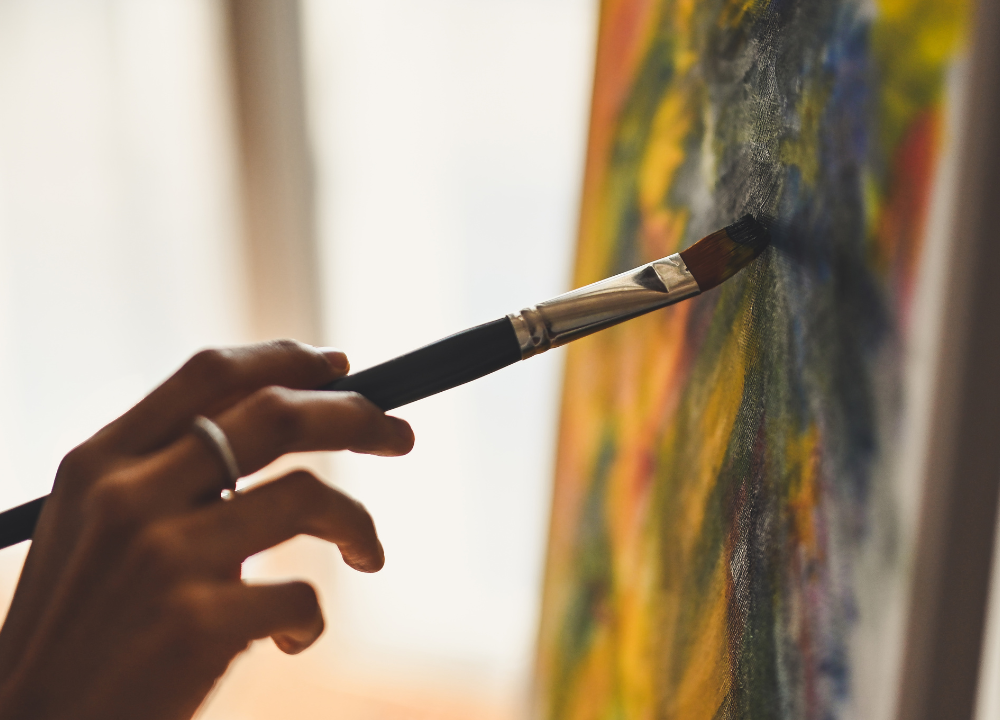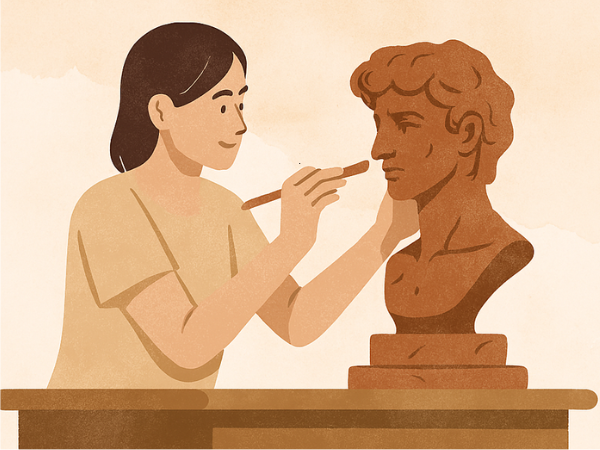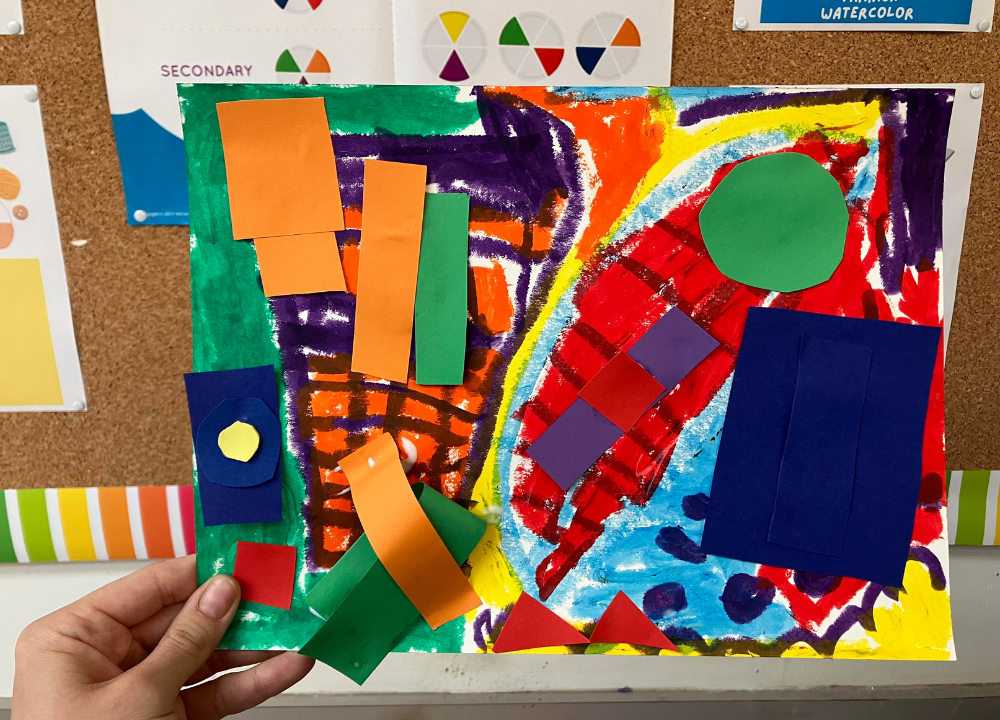Mastering figure drawing with Andrew Loomis’ techniques enhances your skills in capturing human anatomy and proportions. His methods focus on simplifying complex forms into basic shapes.
Andrew Loomis, a renowned illustrator, developed practical techniques for figure drawing that artists still cherish today. His approach simplifies the human body into manageable shapes, making it easier to understand proportions and perspective. By studying Loomis’ methods, artists can enhance their ability to depict lifelike figures.
His books emphasize the importance of structure and gesture, providing a solid foundation for both beginners and seasoned artists. Embracing Loomis’ techniques not only improves technical skills but also fosters creativity and confidence in figure drawing. Dive into his work to transform your artistic journey and elevate your figure drawing capabilities.
Introduction To Loomis
Mastering figure drawing opens a world of creativity. Andrew Loomis is a name that resonates in the art community. His techniques have guided countless artists. This section explores Loomis and his lasting impact.
Loomis’s Legacy
Andrew Loomis was a master illustrator and teacher. He created a series of books that changed figure drawing. His methods are simple yet powerful. Many artists regard his teachings as essential. Here are key aspects of Loomis’s legacy:
- Clear Instruction: Loomis broke down complex forms into simple shapes.
- Comprehensive Guides: His books cover anatomy, perspective, and composition.
- Accessible to All: Beginners and experts benefit from his techniques.
His most famous books include:
| Book Title | Publication Year | Key Focus |
|---|---|---|
| Figure Drawing for All It’s Worth | 1943 | Figure Drawing Techniques |
| Creative Illustration | 1962 | Composition and Design |
| Drawing the Head and Hands | 1956 | Facial Features and Proportions |
Loomis’s techniques focus on understanding the human form. His approach remains relevant today, inspiring new generations of artists.
Impact On Artists
Andrew Loomis’s influence stretches across decades. Many artists credit him for their skills. His techniques empower artists to create dynamic figures. Here are ways Loomis impacted the art community:
- Improved Skills: Artists enhance their figure drawing abilities through his methods.
- Increased Confidence: Understanding structure boosts artistic confidence.
- Community and Collaboration: Artists share techniques learned from Loomis.
Many famous artists have acknowledged Loomis’s influence:
- Frank Frazetta – Renowned fantasy artist.
- Glen Keane – Disney animator.
- Chris Oatley – Illustrator and educator.
His teachings are not just theory; they are practical tools. Artists use them to create stunning works. Embracing Loomis’s techniques can unlock new artistic potential.
Essential Tools
Mastering figure drawing with Andrew Loomis’ techniques requires the right tools. These essential tools can enhance your skills and improve your art. Choosing the right materials and setting up a proper workspace are crucial steps. Let’s dive into the tools you need to succeed.
Choosing Materials
Choosing the right materials can make a big difference in your figure drawing journey. Start with basic supplies that offer versatility. Here are some essential materials to consider:
- Pencils: Use a range of pencils from H (hard) to B (soft). H pencils create fine lines, while B pencils produce darker tones.
- Sketchbooks: A good sketchbook should have thick paper. It prevents bleed-through and allows for various media.
- Erasers: A kneaded eraser works well for precision. It lifts graphite without damaging the paper.
- Charcoal: Charcoal sticks add depth and contrast. They blend easily and provide rich tones.
Here’s a simple table for quick reference:
| Material | Purpose |
|---|---|
| Pencils | For detailed line work |
| Sketchbooks | For drawing practice |
| Erasers | For correcting mistakes |
| Charcoal | For bold shading |
Invest in good quality materials. They improve your drawing experience. Experiment with different tools to find what works best for you. Mastery comes with practice and the right supplies.
Setting Up Workspace
A well-organized workspace boosts creativity. An inviting area helps you focus on your drawing. Follow these tips to create an effective workspace:
- Lighting: Use natural light or a good lamp. Bright spaces reduce eye strain.
- Table Surface: Choose a sturdy table. It should be at a comfortable height for drawing.
- Storage: Keep materials within reach. Use trays or drawers to organize supplies.
- Inspiration: Surround yourself with art that inspires you. Hang up drawings or prints for motivation.
Consider these steps:
- Find a quiet corner in your home.
- Set up your drawing table with all materials.
- Create a comfortable chair setup.
- Ensure your workspace is clean and clutter-free.
Your workspace should reflect your artistic style. A personalized space inspires creativity. Remember, a great workspace leads to great drawings.

Basic Shapes
Mastering figure drawing is essential for artists. Andrew Loomis provides valuable techniques to improve skills. One of these techniques focuses on basic shapes. Understanding basic shapes helps create more complex figures. This approach simplifies the drawing process and boosts confidence.
Constructing Forms
To construct forms, start with basic shapes. Shapes like circles, squares, and triangles form the foundation of all drawings. Here’s how to use them:
- Begin with a simple circle for the head.
- Add an oval for the torso.
- Use rectangles for arms and legs.
Here is a quick reference table:
| Shape | Body Part |
|---|---|
| Circle | Head |
| Oval | Torso |
| Rectangle | Arms and Legs |
After placing these shapes, connect them. Use lines to define the figure’s structure. This method creates a 3D effect. Remember to keep the proportions in mind. This will help maintain balance and realism.
Simplifying Complex Figures
Complex figures can be daunting. Break them down into basic shapes to make them easier. Start by observing the figure closely. Identify the basic shapes that form the figure.
- Look for circles, squares, and triangles.
- Draw these shapes lightly.
- Gradually refine the shapes into more detailed forms.
Here’s a simple step-by-step guide:
- Draw the basic shapes for the head and torso.
- Add limbs using rectangles and ovals.
- Adjust the shapes for proportions.
- Outline the final figure, erasing the basic shapes.
This technique helps in creating dynamic poses. It allows for easier adjustments. Practicing this method will enhance your drawing skills. Remember to keep practicing. Mastery comes with time and effort.
Proportions In Drawing
Mastering figure drawing is essential for every artist. Andrew Loomis’ techniques focus on proportions, helping artists create realistic figures. Understanding proportions makes drawings more lifelike and appealing. This section explores proportions in drawing, specifically focusing on the head, body, and facial features.
Head And Body
The head is the most important part of figure drawing. Proportions help create balance between the head and the body. Loomis suggests using a simple structure to start. Here’s how to break it down:
- Use simple shapes: Start with circles and rectangles.
- Measure the head: The head is often considered one unit.
- Body height: The average adult is about 7.5 to 8 heads tall.
Here’s a quick reference table for proportions:
| Part of Body | Proportion to Head |
|---|---|
| Torso | 2-3 heads tall |
| Legs | 4 heads tall |
| Arms | 2.5 heads long |
Using these basic rules helps achieve proper proportions. Practice sketching figures with these measurements. This builds a strong foundation for drawing.
Facial Features
Facial features require careful attention to detail. Proportions are crucial for creating realistic faces. Loomis teaches a simple method to position features correctly.
Follow these steps for accurate facial proportions:
- Divide the face: Draw a vertical line down the center.
- Horizontal lines: Add a line halfway for the eyes.
- Nose placement: The bottom of the nose sits between the eyes and chin.
- Mouth position: The mouth is usually one-third from the nose to the chin.
Here’s a simple diagram to visualize facial proportions:
| Facial Feature | Proportion |
|---|---|
| Eyes | 1 eye width apart |
| Nose | Width of one eye |
| Mouth | Width of two eyes |
Practicing these proportions will improve your drawing skills. Spend time sketching faces to master the techniques. The more you practice, the better your figures will look.
Dynamic Poses
Mastering figure drawing with Andrew Loomis’ techniques opens the door to dynamic poses. Dynamic poses bring drawings to life, showing energy and emotion. They capture the essence of movement and action. Learning how to draw these poses is essential for any artist. It enhances your skills and helps you convey stories through your art.
Capturing Movement
To capture movement in figure drawing, focus on the following techniques:
- Gesture Drawing: Quick sketches that show the essence of motion.
- Line of Action: A single curved line that represents the main movement.
- Weight Distribution: Understand how weight shifts during movement.
Use these tips for better results:
- Start with a simple shape to represent the body.
- Add the line of action to show movement.
- Sketch the limbs in dynamic positions.
- Refine details while keeping the sense of motion.
Consider this table for understanding movement types:
| Movement Type | Description |
|---|---|
| Running | Quick, forward motion with bent limbs. |
| Jumping | Upward movement with extended limbs. |
| Twisting | Rotational movement, adding drama. |
Practicing these techniques allows artists to create lifelike dynamic poses. Experiment with different movements to gain confidence.
Creating Flow
Creating flow in your figure drawings is crucial for dynamic poses. Flow connects different parts of the body. It guides the viewer’s eye through the artwork.
Here are some essential tips for creating flow:
- S-curve Lines: Use flowing curves to link body parts.
- Overlapping Forms: Show depth by overlapping limbs.
- Rhythm: Use repeated shapes for a sense of movement.
Follow this simple process:
- Start with a basic outline of the figure.
- Identify key points that need connection.
- Draw flowing lines between those points.
- Add details while maintaining the flow.
Check out this flow example:
| Element | Purpose |
|---|---|
| Head Tilt | Creates a sense of direction. |
| Arm Position | Guides the viewer’s gaze. |
| Leg Angle | Adds stability and balance. |
Mastering flow adds elegance to your dynamic poses. Practice often to make your drawings more engaging and lively.
Sketching Techniques
Mastering figure drawing is exciting and rewarding. Andrew Loomis’ techniques help artists of all levels improve their skills. One key area to focus on is sketching techniques. These methods shape your understanding of form, proportion, and movement. They lay the foundation for creating dynamic and lifelike figures. Let’s explore two important aspects of sketching: line quality and building confidence.
Line Quality
Line quality plays a crucial role in figure drawing. It brings life to your sketches. Good line quality can express emotion and movement. Here are some tips to improve it:
- Vary your lines: Use thick and thin lines. This creates depth and interest.
- Practice pressure control: Apply different pressure on your pencil. This affects line weight.
- Use continuous lines: Sketch without lifting your pencil. This helps with fluidity.
To visualize line quality, consider this table:
| Line Type | Effect |
|---|---|
| Thick lines | Add strength and emphasis |
| Thin lines | Create delicacy and detail |
| Broken lines | Suggest movement or texture |
Experiment with different tools. Pencils, pens, or brushes all create unique line qualities. Practice regularly, and your confidence will grow. Strong line quality enhances your overall figure drawing.
Building Confidence
Building confidence in figure drawing is essential. Confidence allows you to express yourself freely. Start by setting achievable goals. Break your learning into small tasks. Here are some effective strategies:
- Daily practice: Dedicate time each day to draw. Consistency is key.
- Draw from life: Observe real people or objects. This sharpens your skills.
- Seek feedback: Share your work with others. Constructive criticism helps you improve.
Remember to keep a sketchbook. Use it for experimenting and tracking progress. Celebrate small victories. This builds positive reinforcement. Here’s a simple checklist to boost your confidence:
- Set clear drawing goals
- Draw daily, even quick sketches
- Join art communities for support
- Learn from mistakes; they are valuable
By following these tips, you will notice improvements. Confidence transforms your sketches. Soon, you will create dynamic and engaging figures with ease.
Shading And Value
Mastering figure drawing requires more than just lines. Shading and value add life and realism to your art. Andrew Loomis taught artists to understand how light interacts with forms. This makes your drawings look three-dimensional and vibrant.
Light Sources
Understanding light sources is key to effective shading. Light can come from many directions. Each light source affects how we see shapes and textures. Here are some important points:
- Identify where the light is coming from.
- Notice how it creates highlights and shadows.
- Determine the intensity of the light.
- Practice with different light sources like sunlight and artificial lights.
Here’s a simple table to help you remember the effects of different light sources:
| Light Source | Effect on Shading |
|---|---|
| Sunlight | Strong contrasts, deep shadows |
| Indoor Light | Soft shadows, gentle highlights |
| Colored Light | Alters the appearance of shadows |
Always keep the light source in mind while shading. This will help you create realistic figures. Remember to observe how light changes throughout the day. Different times will give you different shadows.
Creating Depth
Creating depth in your drawings adds interest. It makes your art feel alive and engaging. Use shading to show how close or far objects are from the viewer. Here are some effective techniques:
- Layer your shading. Darker areas appear closer.
- Use lighter values for distant objects.
- Vary your pencil pressure to create different values.
Consider these tips to enhance depth:
- Start with a light sketch of your figure.
- Identify the darkest and lightest parts.
- Gradually build up your shading in layers.
Remember to study real-life objects. Observe how shadows play on surfaces. This practice will improve your understanding of depth. With time, your figures will have a strong three-dimensional presence.
Practical Exercises
Mastering figure drawing can transform your artistic skills. Andrew Loomis’ techniques provide essential methods for capturing the human form. Practical exercises allow artists to apply these techniques effectively. Regular practice and constructive feedback are key to improvement.
Daily Drawing Habits
Establishing daily drawing habits is crucial for mastering figure drawing. Consistency helps reinforce skills. Here are some effective practices to incorporate:
- Set a specific time each day for drawing.
- Choose a comfortable and quiet space.
- Warm-up with simple shapes and lines.
- Draw from real life or reference images.
- Vary your subjects to keep things interesting.
Consider creating a drawing schedule. Here’s a simple table to guide your weekly practice:
| Day | Focus |
|---|---|
| Monday | Gesture Drawing |
| Tuesday | Proportions |
| Wednesday | Shading Techniques |
| Thursday | Body Parts |
| Friday | Full Figures |
| Saturday | Critique Your Work |
| Sunday | Free Drawing |
These habits will build your skills. Stick with them. Practice regularly and watch your drawing improve!
Feedback And Improvement
Feedback is vital for progress in figure drawing. Constructive criticism can guide your learning. Here’s how to effectively seek feedback:
- Share your work with friends or peers.
- Join online art communities.
- Attend local art groups or workshops.
- Ask specific questions about your work.
Keep an art journal to track your progress. Write notes on feedback received. Reflect on areas to improve. Here’s a simple format:
| Date | Feedback | Action Steps |
|---|---|---|
| Week 1 | Focus on proportions. | Practice measuring body parts. |
| Week 2 | Improve shading techniques. | Try different shading styles. |
| Week 3 | Work on gesture drawing. | Draw quick poses. |
Use this journal for continuous improvement. Review your progress regularly. Celebrate small wins. This will motivate you to keep going!
Conclusion
Mastering figure drawing is a rewarding journey. Andrew Loomis’ techniques offer valuable insights for artists at any level. By practicing these methods, you can enhance your skills and confidence. Embrace the learning process, and don’t hesitate to experiment. With dedication, your figure drawing will reach new heights, showcasing your unique artistic voice.




